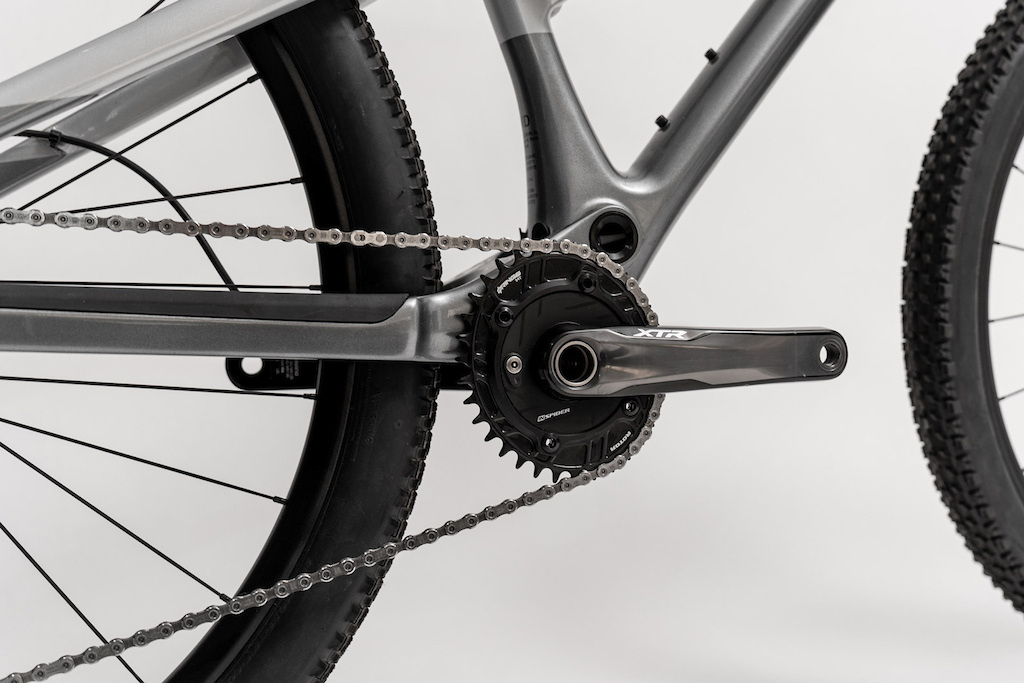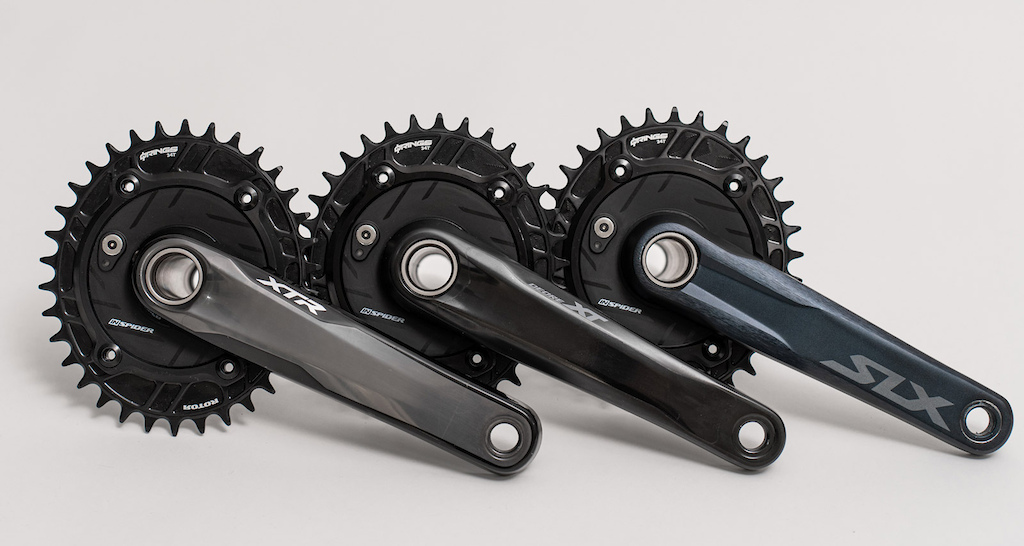Rotor Announces INspider Power Meter for Shimano Cranks
Rotor Bike is introducing a Shimano-compatible version of its popular INspider Power Meter, designed to work with SLX, XT and XTR cranksets. The Spanish brand claims their INspider power meters are the only spider-based power meters that are able to measure power accurately for both round, and oval chainrings. That's thanks to the high torque sampling rate of 120 times per second - so, if you're pedaling at 60 rpm, the INspider takes a measurement 120 times per revolution of the cranks. Other spider-based power meters with a much lower sampling rate tend to give erroneous power measurements thanks to the inconsistent curvature of the chainring.
Rotor INspider Power Meter for Shimano Cranks - Tech Details
This is Rotor's very first spider-based power meter that is compatible with non-Rotor cranks, bringing the technology to those who run a Shimano crankset. Spec-wise, the new Shimano-compatible INspider is much the same as the Rotor one, only the OCP Mount spline replaced by the Shimano's Direct Mount spline, and the profile adjusted for chainline requirements.
It adds a 99 gram weight penalty to your drivetrain, in exchange for power, cadence, estimated balance and torque information that can be transmitted directly to your cycle computer of choice via ANT+ or Bluetooth Smart. The 100 x 4 BCD INspider is compatible with round chainrings from 30T to 36T, as well as ROTOR's own Q-Rings (that are oval in shape).
As the oval ring varies the effective chainring size throughout the pedal stroke, it allows riders to clock the largest part of the chainring to match up with the most powerful portion of their pedal stroke, maximizing use of it while smoothing out power delivery to the rear wheel. The Q-Rings can be mounted in a variety of positions, and the best position is said to vary between riders, likely dependent on how their anatomy is pre-conditioned to deliver power, lever lengths, crank length, seat tube angle, saddle position, and I'm sure a heap of other factors. The Rotor INspider power meter can also be used as a tool to dial in the correct Q-Ring angle, by virtue of its Optimum Chainring Angle feature.
The INspider measures power from the right and left leg combined, with claimed accuracy at +/- 1.5% over a temperature range of -20ºC and 50ºC. Its lithium-ion battery is rechargeable via USB, and has a claimed run time of 350 hours on a full charge.
Pricing & Availability
The Rotor INspider Shimano-Compatible power meter is available now at an introductory price of 449 €. More details available on rotorbike.com.
Author Info:
Must Read This Week




Barman says ‘ ok you can have a drink , but I don’t want you starting anything ‘
@NoahColorado both Sigeyi and Xcadey are well established now, accuracy is good from what I heard. (I don't love the stages that I have (random power spikes and some drop off issue))
Power meters, specifically strain gauges calibrated to convert strain of bending metal ever so slightly to power in the context of cycling, are incredibly niche. To add to that, the implementation of the strain gauge and its calibration will differ slightly if you’re measuring at the hub vs crank arm vs spider vs pedals.
So no, you can't trust them all.
1) reed switches triggered by magnets. Incredibly simple, cheap hardware, same concept as old school wheel-based speedometers. Used in countless applications to count rotations of things (think manufacturing).
2) accelerometers— fancier tech, but they’ve proliferated even further with smart phones, wearables, etc.
You don’t have to get the $400, but depending on other specs on your bike, it might be difficult to avoid.
I do have a power meter on my XC bike, because that is more pedaling. When I had the power meter on my enduro bike, I would often get a stress score from the power meter that was half of what the heart rate monitor said.
You'd do much better than you think.
Power is force x distance x time. How can you build a power meter that behaves differently based on ring shape? Are they saying regular power meters are all wrong because sample rate is too low? Exactly how wrong can they be since they don’t know how riders power is applied.
that claim that it ‘works with non round rings’ reads like fake ‘interesting ad copy’?
If power meters results change with ring shape then they’d also change depending on how one pedals, example: when standing or pedaling circles.
4iiii.zendesk.com/hc/en-us/articles/360038484072-Using-an-Oval-Chainring-with-4iiii-Powermeters
Not an engineer, but here's a link to a power meter company saying their power meters over-estimate with oval rings and explaining why.
The reason why sampling rate might matter is the speed (distance/time) of a round ring is constant, where as an oval ring is not.
I have a good luck with the durability of Rotor power meters in the past. If I was still into training with power meters I would get one of these.
@beeeefkirky: thanks for that link.
Still doesn’t pass my sniff test but I’ll accept it.
Ok. In that case, doesn’t the speed change?
*Something* has to change in the power equation.
4iiii, Stages, and Garmin pedals swapped between two bikes (one oval, one round).